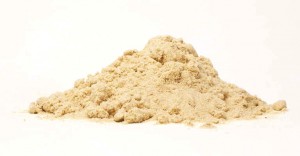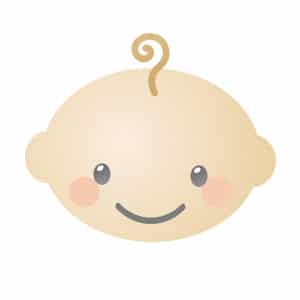Last updated on August 19th, 2022 at 10:46 pm
 It’s warmer out now, and outdoor play is coming to the forefront. Nothing like a good romp in the sand box right? Well, maybe not. Now before you shoot me… I’ve been chewing on this answer for some time and actually, our friend Katy from Non-Toxic Kids did a great article about play sand last year. My son loves to play with sand… he’s one of those boys who loves to make roads and use his construction vehicles and create parking lots in it. Of course, when I started reading more about it after noticing dust coming from the sand, I decided to pitch it (dust from anything can’t be good right?) and make sure I had something safe.
It’s warmer out now, and outdoor play is coming to the forefront. Nothing like a good romp in the sand box right? Well, maybe not. Now before you shoot me… I’ve been chewing on this answer for some time and actually, our friend Katy from Non-Toxic Kids did a great article about play sand last year. My son loves to play with sand… he’s one of those boys who loves to make roads and use his construction vehicles and create parking lots in it. Of course, when I started reading more about it after noticing dust coming from the sand, I decided to pitch it (dust from anything can’t be good right?) and make sure I had something safe.
Many times play sand is made of crushed rock instead of beach or river sand. This crushed rock or crystalline silica is already a known carcinogen, according to the EPA and OSHA. In California, companies are required by law to label products (thanks to California’s Prop 65) that contain carcinogens. So many times, you’ll even see it on the bag stating its carcinogenic. But that’s not the case everywhere, unfortunately. (Which really baffles me as to why they’d sell something carcinogenic as a kid’s play toy). Some brands of sand even contain asbestos tremolite which can put you and kids at risk of lung cancer.
What Do I Do?
Avoid play sand that creates airborne dust that kids can easily breathe. That ultra fine “clean” play sand that kicks up all that dust isn’t good to be breathing. Many times those are the sands made of crushed rock. You’ll want sand made from the actual beach or river sand if possible. The granules are larger so the dust factor is less of an issue. Here’s a few better options in stores or for purchase online:
Sandtastik Classic Play Sand: Sandtastik is a safer non-toxic sand that contains no crystalline silica silica or quartz. I haven’t tried it out but it looks like basic white sand. You can purchase it online on Amazon.com
SafeSand: This company provides safe play sand that contains no crystalline silica or quartz. It’s a safe white sand prefect for sand boxes or playgrounds. They have a weath of information on their website about the dangers of silica and quartz dust. The only problem with SafeSand is you can only buy a 50 pound box for $60 (without shipping). So consider chipping in with a couple of moms. (or if you live in San Fransisco you can pick it up locally to save yourself the shipping costs)
*Sakrete Natural Play Sand: I went on a hunt to find replacement sand for my son’s sand box and found that Home Depot now sells a more natural brand of sand made by Sakrete. It’s “natural sand”, not manufactured and has the consistency of real beach sand rather than that ultra fine stuff we’re used to. NO DUST with this brand – I have it and it is more like beach sand than that ultra fine dusty stuff. Sakrete screens and washes the sand for use on playgrounds so it’s a safer option.
UPDATE on Sakrete: I just got word from a reader who was nice enough to call the company and ask. They confirmed their natural play sand does contain crystalline silica and that it says so on the bag. Well, I am looking at a bag as I type this and that isn’t the case. I got an email from an exec who promised me an email by the end of this week to clarify. We’ll see but it’s not looking good. Back to the drawing board! (Or back to the beach to swipe a bagful there)
My usual recommendation is to choose high grit sand that doesn’t cause dust and to encourage hand washing after playtime.

